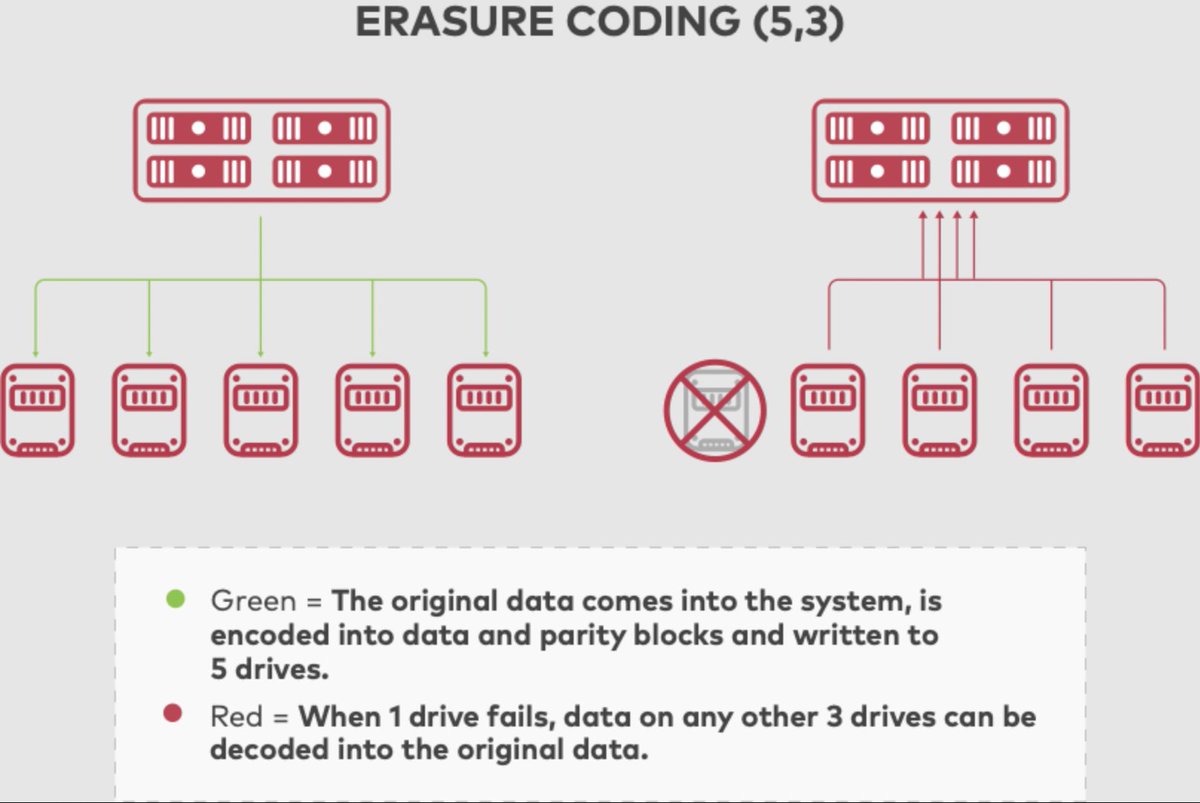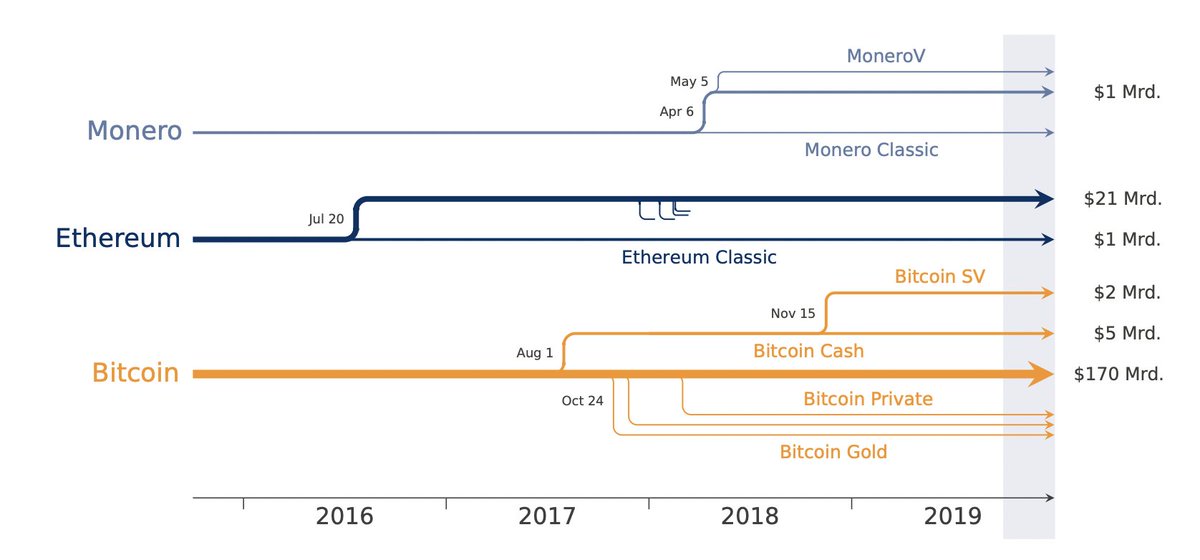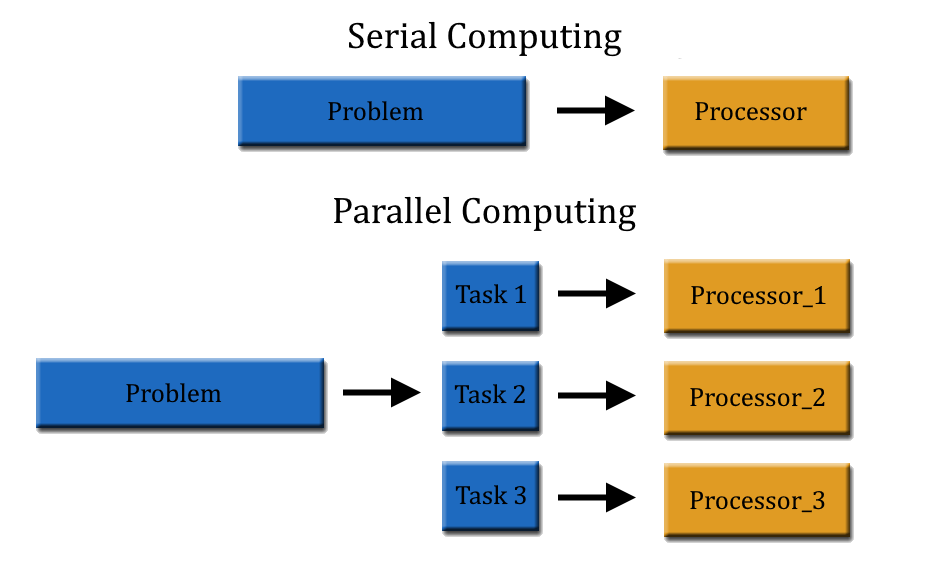
Data availability has been an exciting and new topic for discussion among the #CardanoCommunity recently
But it's also an abstract and complex topic
So here's a thread that simplifies "Data availability"(DA)
And how a DA-Layer would function on #Ethereum 2.0
But it's also an abstract and complex topic
So here's a thread that simplifies "Data availability"(DA)
And how a DA-Layer would function on #Ethereum 2.0
Data availability is the guarantee that the block proposer published all transaction data for a block
And that the transaction data is available to other network participants
Why is it important?
For this, one must understand how trustlessness work in public blockchains
And that the transaction data is available to other network participants
Why is it important?
For this, one must understand how trustlessness work in public blockchains
• Block:
Each block has two major parts:
• The block header:
This contains general information (metadata) about the block
Such as the timestamp, block hash, block number, etc.
• The block body:
This contains the actual transactions processed as part of the block
Each block has two major parts:
• The block header:
This contains general information (metadata) about the block
Such as the timestamp, block hash, block number, etc.
• The block body:
This contains the actual transactions processed as part of the block

Then there are three main actors in a public blockchain network
• Full node
• Light node
• Block-producing nodes
In a P2P network,
Block-producing nodes & full nodes are mixed to form a network
With light nodes linked to either of them
• Full node
• Light node
• Block-producing nodes
In a P2P network,
Block-producing nodes & full nodes are mixed to form a network
With light nodes linked to either of them

Block-producing nodes are responsible for packaging transactions and generating blocks
They have different names in different blockchains, such as
“Stakepools” in Cardano
“Miner/Mining pool” in Bitcoin & Ethereum
“Validator” in beacon chain of Ethereum 2.0
They have different names in different blockchains, such as
“Stakepools” in Cardano
“Miner/Mining pool” in Bitcoin & Ethereum
“Validator” in beacon chain of Ethereum 2.0
In a P2P network,
Full nodes (eg: Daedalus) download new transactions & blocks for verification
Then broadcast only valid transactions & blocks to other nodes
In order to verify that
The full node must have the complete current state of the network
Full nodes (eg: Daedalus) download new transactions & blocks for verification
Then broadcast only valid transactions & blocks to other nodes
In order to verify that
The full node must have the complete current state of the network
Light nodes are different from full nodes
in that, they only download and verify only the block header of every new block
Therefore, light nodes can verify the validity of the block header
But cannot validate the transactions in the block body
in that, they only download and verify only the block header of every new block
Therefore, light nodes can verify the validity of the block header
But cannot validate the transactions in the block body
When proposing new blocks,
The block producers must publish the entire block including the block body
Which contains the transaction "Data"
Nodes participating in consensus can then download the block's "Data"
And re-execute the transactions to confirm their validity
The block producers must publish the entire block including the block body
Which contains the transaction "Data"
Nodes participating in consensus can then download the block's "Data"
And re-execute the transactions to confirm their validity
Without these nodes verifying transactions
Block proposers could get away with inserting malicious transactions into blocks
This is how nodes verify that new information is valid
Rather than having to trust those block producers are honest
("don't trust, verify")
Block proposers could get away with inserting malicious transactions into blocks
This is how nodes verify that new information is valid
Rather than having to trust those block producers are honest
("don't trust, verify")
So in this way,
DA guarantees that the block proposer published all transaction data for a block
And that the transaction data is available to other network participants
This is how a public blockchain reduces trust assumptions
By enforcing rules on data availability
DA guarantees that the block proposer published all transaction data for a block
And that the transaction data is available to other network participants
This is how a public blockchain reduces trust assumptions
By enforcing rules on data availability
So what happens,
If a validator publishes a block without the transaction data (block body)?
This situation is known as the “data withholding attack”
If a data withholding attack happens
Full nodes cannot verify the correctness of updates to the blockchain's state
If a validator publishes a block without the transaction data (block body)?
This situation is known as the “data withholding attack”
If a data withholding attack happens
Full nodes cannot verify the correctness of updates to the blockchain's state
This gives malicious block proposers an opportunity
To manipulate the protocol rules
And advance invalid state transitions on the blockchain network
That's why the visibility of block data to full nodes is critical
To manipulate the protocol rules
And advance invalid state transitions on the blockchain network
That's why the visibility of block data to full nodes is critical
And because light clients, rely on full nodes to verify the network’s state
The DA ensures that full nodes can validate the block
And prevent the chain from getting corrupted and attacked by malicious actors
In short, DA is critical to the security of a public blockchain
The DA ensures that full nodes can validate the block
And prevent the chain from getting corrupted and attacked by malicious actors
In short, DA is critical to the security of a public blockchain
As we have understood the basic concept of DA
now let's look at the types of DA
In general,
There are two types of DA
• On-chain
• & Off-chain
now let's look at the types of DA
In general,
There are two types of DA
• On-chain
• & Off-chain
• On-chain DA
On-chain DA is a feature of "monolithic blockchains" like Cardano or Ethereum 1.0
Because these #Blockchains manages
• Consensus
• Data availability
• & Transaction execution, on a single layer
On-chain DA is a feature of "monolithic blockchains" like Cardano or Ethereum 1.0
Because these #Blockchains manages
• Consensus
• Data availability
• & Transaction execution, on a single layer
Monolithic blockchains deal with the data availability problem
or in other words
The problem of
"how do we verify that the data for a newly produced block is available?"
By storing state data redundantly across the network
or in other words
The problem of
"how do we verify that the data for a newly produced block is available?"
By storing state data redundantly across the network
By ensuring the storage of data redundantly across the network
The blockchain protocol ensures,
that the full nodes have access to data necessary
1. To reproduce transactions
2. Verify state updates
3. and Flag invalid state transitions
The blockchain protocol ensures,
that the full nodes have access to data necessary
1. To reproduce transactions
2. Verify state updates
3. and Flag invalid state transitions
But there is a drawback to the on-chain DA
The on-chain DA places bottlenecks on scalability
Meaning,
the on-chain DA creates a bottleneck on 2 key aspects of a #blockchian
What are they?
• Scalability
• & Decentralization
The on-chain DA places bottlenecks on scalability
Meaning,
the on-chain DA creates a bottleneck on 2 key aspects of a #blockchian
What are they?
• Scalability
• & Decentralization
• Scalability
As nodes must download every block and replay the same transactions
Monolithic blockchains often take a longer time to process & finalize transactions
And as the size of the state grows, the time to process transactions also grows
As nodes must download every block and replay the same transactions
Monolithic blockchains often take a longer time to process & finalize transactions
And as the size of the state grows, the time to process transactions also grows
• Decentralization
The transaction data of a #blockchain grows over time
The size of the #Ethereum full node is around 842.48 GB
As the protocol requires full nodes to store increasing amounts of data
It would likely reduce the number of people willing to run a full node
The transaction data of a #blockchain grows over time
The size of the #Ethereum full node is around 842.48 GB
As the protocol requires full nodes to store increasing amounts of data
It would likely reduce the number of people willing to run a full node
• Off-chain DA
Due to the scalability limitations of the on-chain DA
Off-chain DA systems move data storage off the blockchain
Here,
Block producers don't publish transaction data on-chain
But provide a cryptographic commitment to prove the availability of the data
Due to the scalability limitations of the on-chain DA
Off-chain DA systems move data storage off the blockchain
Here,
Block producers don't publish transaction data on-chain
But provide a cryptographic commitment to prove the availability of the data
Scaling solutions like Validium & Plasma adopt this approach
By separating DA from Consensus & Execution
This is considered the ideal way to scale blockchains without increasing node requirements
But it has negative implications for decentralization, security, & trustlessness
By separating DA from Consensus & Execution
This is considered the ideal way to scale blockchains without increasing node requirements
But it has negative implications for decentralization, security, & trustlessness
For eg:
Participants in Validiums must trust block producers
Not to include invalid transactions in proposed blocks
Block producers can act maliciously by advancing invalid state transitions
and cripple attempts to challenge malicious transactions by withholding state data
Participants in Validiums must trust block producers
Not to include invalid transactions in proposed blocks
Block producers can act maliciously by advancing invalid state transitions
and cripple attempts to challenge malicious transactions by withholding state data
Due to the problems associated with off-chain DA
Scaling solutions like Optimistic- and ZK-rollups don't store their own transaction data
But they use for eg: Ethereum Mainnet as a data availability layer
Scaling solutions like Optimistic- and ZK-rollups don't store their own transaction data
But they use for eg: Ethereum Mainnet as a data availability layer
Now we have seen that both on-chain & off-chain DA has limitations
So, is there an optimal solution for DA?
That allows for scalability & decentralization
There are a number of theoretical solutions to the DA problem
So let's see how Ethereum is trying to solve the DA problem
So, is there an optimal solution for DA?
That allows for scalability & decentralization
There are a number of theoretical solutions to the DA problem
So let's see how Ethereum is trying to solve the DA problem
Danksharding(DS) is the proposed method for increasing data throughput on Ethereum’s execution layer
DS takes this same principle of splitting network activity into shards
But instead of using the shards to increase throughput
It uses them to increase space for “blobs” of data
DS takes this same principle of splitting network activity into shards
But instead of using the shards to increase throughput
It uses them to increase space for “blobs” of data

Shards would store data
& attest to the availability of ~250 kB sized blobs of data for L2 protocols such as rollups
Here,
A particular technique is used to verify the availability of high volumes of data
Without requiring a single node to personally download all of the data
& attest to the availability of ~250 kB sized blobs of data for L2 protocols such as rollups
Here,
A particular technique is used to verify the availability of high volumes of data
Without requiring a single node to personally download all of the data

This technique is known as Data availability sampling (DAS)
With DAS
A node can download just a small portion of the full block of the data published by the rollup on L1
Which can give guarantees that are identical to downloading and checking the entirety of the block
With DAS
A node can download just a small portion of the full block of the data published by the rollup on L1
Which can give guarantees that are identical to downloading and checking the entirety of the block
So how does it work?
1. "Erasure code" the data first
2. Data is then interpolated as a "polynomial"
3. Then the data is evaluated at a number of random indices on the blob
Let's go further into those steps👇
1. "Erasure code" the data first
2. Data is then interpolated as a "polynomial"
3. Then the data is evaluated at a number of random indices on the blob
Let's go further into those steps👇
1. Erasure coding the data
Erasure coding (EC) is a method of data protection
In which data is broken into fragments, expanded & encoded with redundant data pieces
And stored across a set of different locations
Erasure coding (EC) is a method of data protection
In which data is broken into fragments, expanded & encoded with redundant data pieces
And stored across a set of different locations

2. Conversion of data as a "polynomial"
Once erasure coding of the data is completed
This data is then extended by converting it into a polynomial
Meaning,
The coded data is converted into a mathematical representation
Which is reconstructible from any point
Once erasure coding of the data is completed
This data is then extended by converting it into a polynomial
Meaning,
The coded data is converted into a mathematical representation
Which is reconstructible from any point
3. Evaluation of data at random indices
50% of the erasure-coded data must be available
The entire block can be reconstructed from that
So an attacker would have to hide >50% of the block
To successfully trick DAS nodes into thinking the data was made available when it wasn’t
50% of the erasure-coded data must be available
The entire block can be reconstructed from that
So an attacker would have to hide >50% of the block
To successfully trick DAS nodes into thinking the data was made available when it wasn’t

The probability of <50% being available after many successful random samples is very small
This process is combined with KZG commitments (a.k.a. Kate commitments)
To prove that the original data was erasure coded properly
This process is combined with KZG commitments (a.k.a. Kate commitments)
To prove that the original data was erasure coded properly
To avoid this design forcing high system requirements on validators
A concept of proposer/builder separation (PBS) was introduced
1. Block builders bid on the right to choose the contents of the slot
2. Proposers need only select the valid header with the highest bid
A concept of proposer/builder separation (PBS) was introduced
1. Block builders bid on the right to choose the contents of the slot
2. Proposers need only select the valid header with the highest bid

In this case
Only the block builder needs to process the entire block
All other validators and users can verify the blocks very efficiently through DAS
Credits: @Delphi_Digital
Only the block builder needs to process the entire block
All other validators and users can verify the blocks very efficiently through DAS
Credits: @Delphi_Digital

Unfortunately, PBS enables the builders to censor transactions
A Censorship Resistance List (crList) helps to put a check on this power
Proposers specify a list of all eligible transactions in the mempool
Then the builder will be forced to include them unless the block is full
A Censorship Resistance List (crList) helps to put a check on this power
Proposers specify a list of all eligible transactions in the mempool
Then the builder will be forced to include them unless the block is full

TL;DR -
• Ethereum has embraced a rollup-centric-roadmap
• And "Danksharding" is the step in that direction
• Creating an efficient data availability for rollups building on top of #Ethereum
• Is this model the right path for DA? only time can tell
• Ethereum has embraced a rollup-centric-roadmap
• And "Danksharding" is the step in that direction
• Creating an efficient data availability for rollups building on top of #Ethereum
• Is this model the right path for DA? only time can tell

That's it for now!
Give me a follow @Soorajksaju2
if you never wanna miss a weekly update from the Cryptoverse, #Cardano
And Deep Dives into crypto metrics & L1 assessments?
Then subscribe to your weekly Just The Metrics Newsletter👇
bit.ly/JustTheMetrics…
Give me a follow @Soorajksaju2
if you never wanna miss a weekly update from the Cryptoverse, #Cardano
And Deep Dives into crypto metrics & L1 assessments?
Then subscribe to your weekly Just The Metrics Newsletter👇
bit.ly/JustTheMetrics…
• • •
Missing some Tweet in this thread? You can try to
force a refresh











